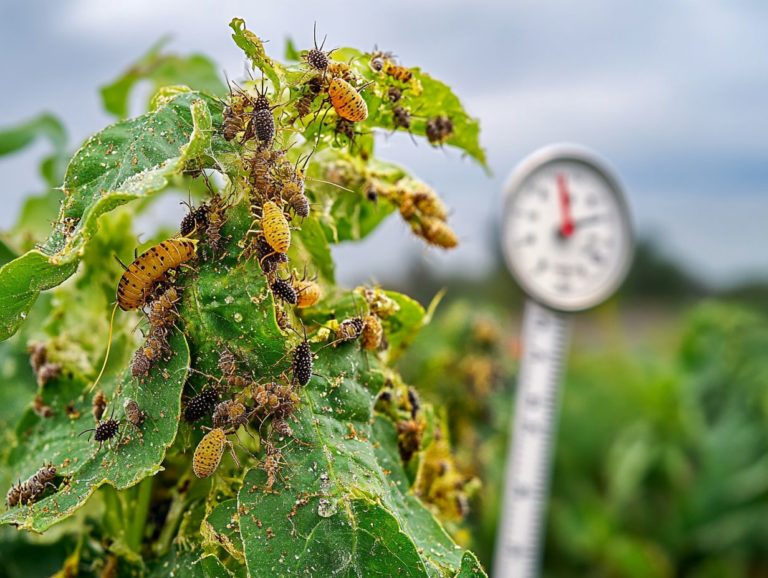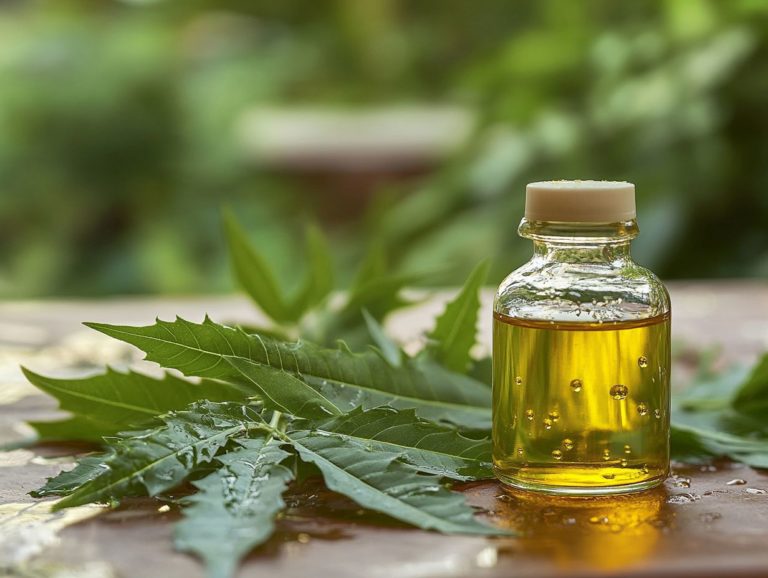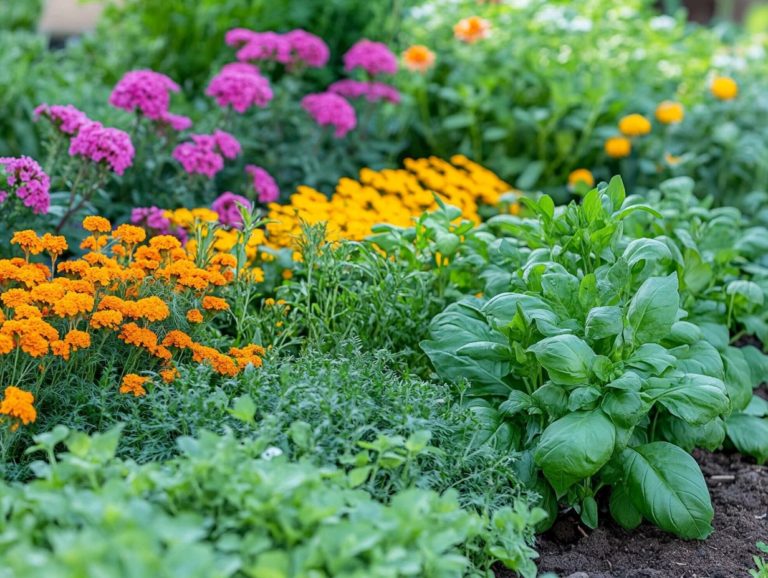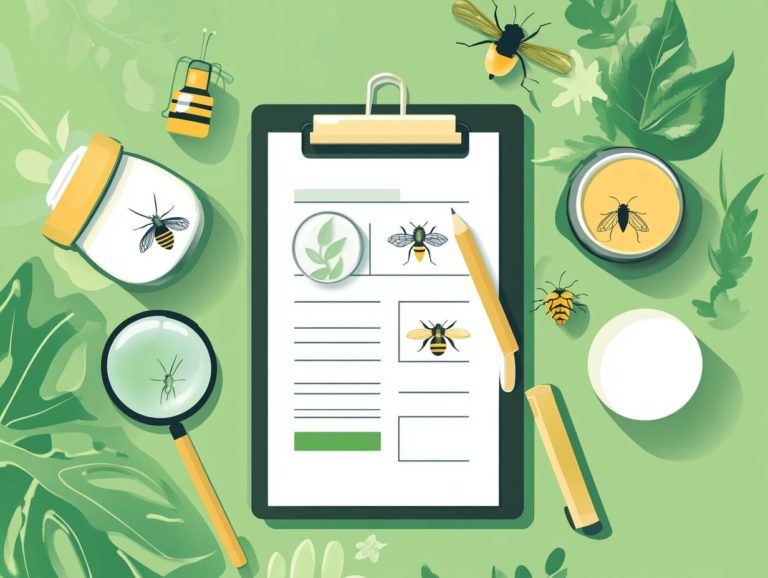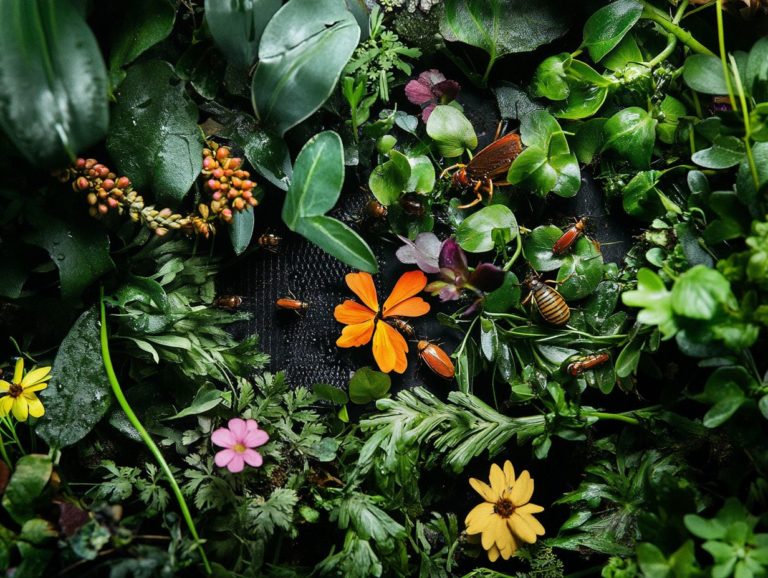Homemade Insecticidal Soap: A Step-by-Step Guide
Are pesky pests making themselves at home in your garden or living space?
If you’re seeking an effective, eco-friendly solution, homemade insecticidal soap could be exactly what you need. This straightforward yet powerful remedy utilizes common household items to combat unwanted insects without resorting to harmful chemicals.
You’ll uncover the benefits of using homemade insecticidal soap and learn about the essential ingredients. Plus, you ll find a step-by-step guide to crafting it! Say goodbye to bugs the natural way it’s time to take action!
Contents
Key Takeaways:
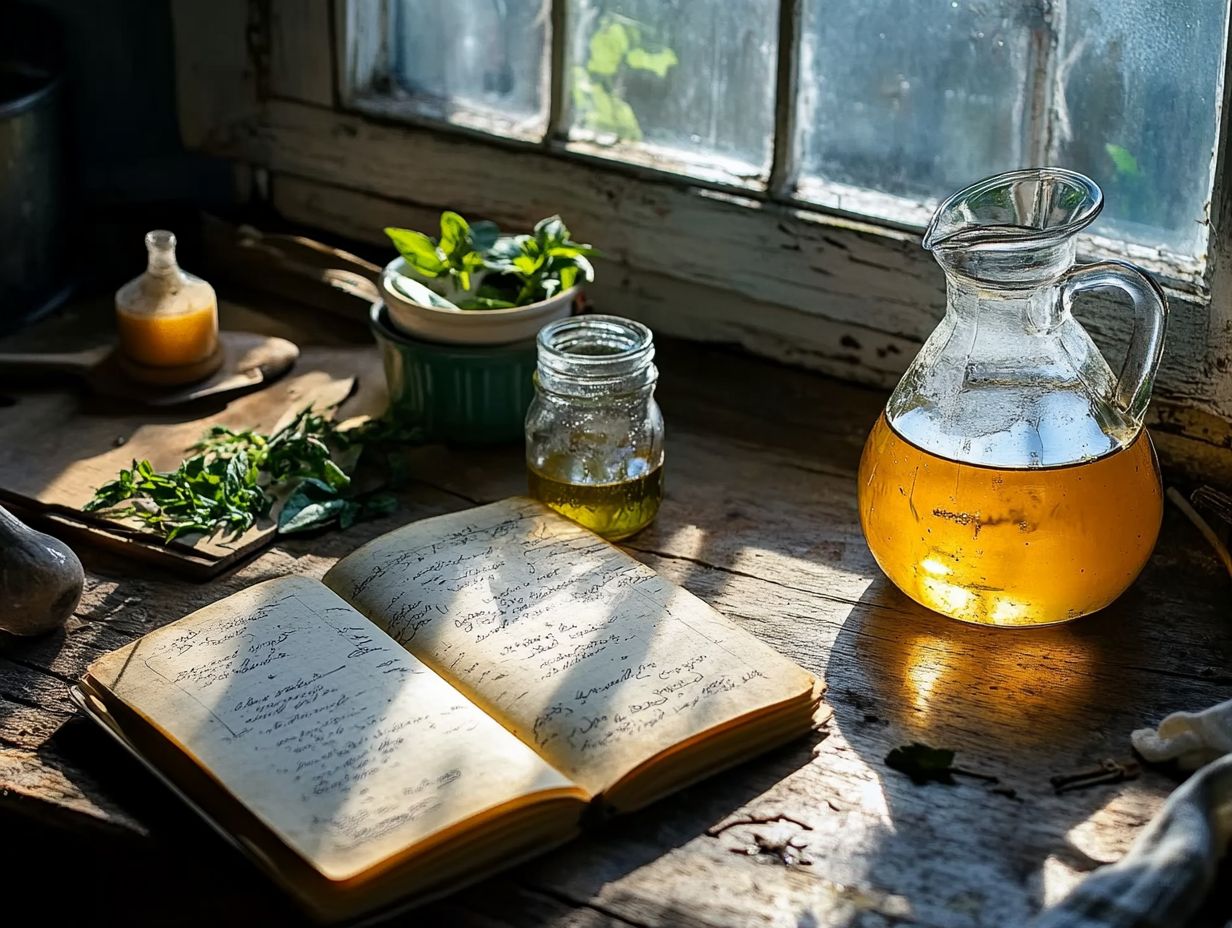
- Avoid harmful chemicals; use DIY insecticidal soap for natural pest control.
- Make your own soap easily with household items to save money and protect the environment.
- Follow mixing and application instructions for the best results and safety.
What is Homemade Insecticidal Soap?
Homemade insecticidal soap serves as an invaluable asset in your organic gardening toolkit. It effectively tackles a range of plant pests, particularly those soft-bodied pests like aphids, spider mites, and whiteflies.
This easy-to-make remedy uses natural oils found in plants to control pests effectively. It combines these oils with pure liquid soap to disrupt the cellular structure of unwelcome invaders. By adopting this approach, you manage specific infestations while aligning your gardening practices with the principles of sustainability and environmental stewardship.
It s crucial to apply this homemade solution with care. Ensure that you don t inadvertently harm beneficial insects like ladybugs and lacewings. Maintaining a balanced ecosystem is vital, as these helpful allies play a key role in controlling pest populations, allowing your garden to flourish with a rich tapestry of life.
Benefits of Using Homemade Insecticidal Soap
Homemade insecticidal soap presents a wealth of advantages for those engaged in organic gardening. It establishes itself as a favored method for effective pest control that targets soft-bodied pests while minimizing harm to beneficial insects.
By opting for non-toxic insecticides, you can achieve remarkable results without worrying about chemical residues jeopardizing plant health or impacting nearby wildlife. You can craft your own insecticidal soap, giving you the flexibility to manage pest control strategies with confidence and efficiency.
Effective and Non-Toxic Pest Control
Utilizing homemade insecticidal soap offers an effective and non-toxic approach to pest control. It keeps harmful insects like aphids, spider mites, and whiteflies at bay while ensuring that beneficial insects in your garden remain unharmed.
This DIY solution suffocates soft-bodied pests without the need for harsh chemicals, allowing you to maintain a healthy ecosystem. By mixing vegetable oil and pure liquid soap, you can protect your plants from infestations while staying true to your organic gardening principles. You can even use garlic and ground red pepper as additional repellent ingredients.
The power of this gentle insecticide lies in its ability to penetrate the protective outer layer of these pests. This leads to dehydration and their eventual demise. This method targets those pesky intruders threatening your plants’ vitality while preserving the natural balance within your garden.
Beneficial insects like ladybugs and lacewings, which help keep pest populations in check, are unharmed by the soap. This allows them to flourish and contribute to a healthier ecosystem.
By implementing this strategy, you can enjoy lush, vibrant plants that are more resilient to disease. Ultimately, this fosters a thriving environment that supports a diverse range of life forms.
Ingredients and Tools Needed
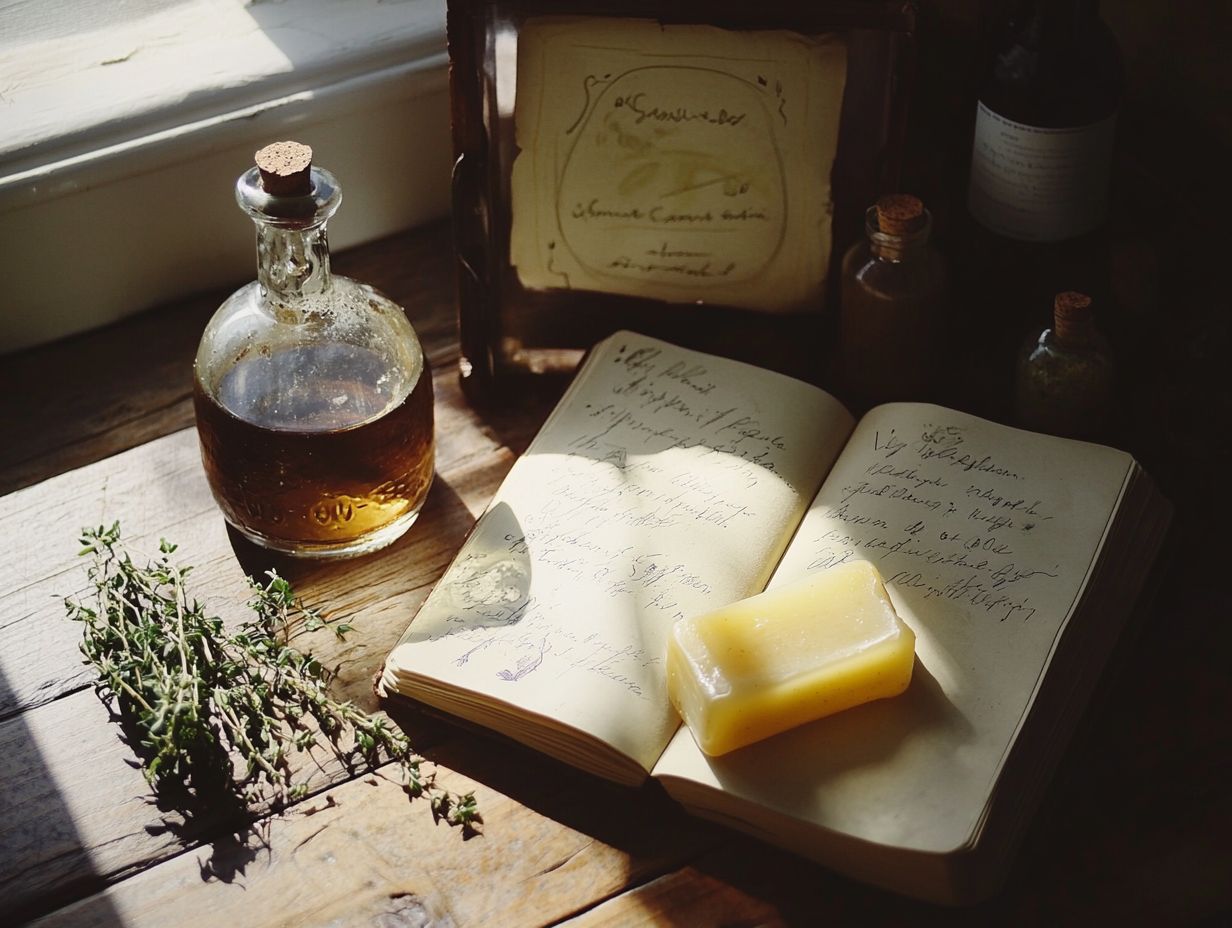
To craft an effective homemade insecticidal soap, you ll need just a handful of simple ingredients and tools designed to aid in the mixing and application of this organic pest control solution.
The key components are vegetable oil and pure liquid soap, which combine to create a powerful mixture that effectively targets soft-bodied pests, all while remaining gentle on the environment.
Essential tools include a garden sprayer for uniform application and a measuring cup to guarantee precise proportions. This makes the entire process straightforward and accessible for any gardener seeking eco-friendly alternatives to commercial insecticidal soap.
Common Household Items and Equipment
Common household items like vegetable oil and pure soap serve as the essential building blocks for your homemade insecticidal soap, enabling you to tap into readily available resources for effective pest control. Add items like garlic to make the formula more effective.
With familiar tools like a mixing bowl and a garden sprayer, the process becomes both convenient and efficient, making organic gardening accessible to anyone eager to take charge.
Along with these staples, baking soda and water play pivotal roles. Baking soda not only aids in mixing oil and soap so they blend well, but also serves as a gentle substance that fights fungus. A teaspoon of dish soap, when blended with your other ingredients, helps break down the protective outer coatings of insects, enhancing the soap’s efficacy.
For those looking to personalize their concoctions, herbs like peppermint or rosemary can be added for an extra layer of repellency. Experimenting with various combinations opens up a delightful avenue for you to discover what works best in your unique gardening environment, transforming the task of pest control into a creative opportunity.
Step-by-Step Guide to Making Homemade Insecticidal Soap
Making your own insecticidal soap is easy and fun! Begin by gathering essential ingredients such as vegetable oil and pure liquid soap, following straightforward instructions to achieve the ideal consistency and potency.
Once your mixture is ready, a garden sprayer becomes your best ally, allowing for effortless application directly onto the affected plants. This ensures that soft-bodied pests are precisely targeted, while also preventing sooty mold from developing.
With this DIY approach, you can manage pest control with confidence, all while staying true to organic gardening principles. Act fast to keep those pests away!
Mixing and Application Instructions
The mixing and application instructions for homemade insecticidal soap are key to fighting plant pests effectively. Start by measuring the right amounts of vegetable oil and pure liquid soap, blending them thoroughly until you achieve a consistent solution.
For optimal results, a widely used ratio is 1 tablespoon of liquid soap to 2 tablespoons of vegetable oil, combined with 1 quart of water. Gently stir the mixture to avoid excessive foam, which could hinder application.
Once your mixture is ready, pour it into a garden sprayer for easy use. To effectively target pests, apply the soap mixture early in the morning or late in the afternoon, when temperatures are cooler. Don t forget to spray the undersides of leaves, where many pests like to hide.
Repeating this process weekly or after rainfall will significantly enhance the effectiveness of your organic gardening efforts.
So gather your ingredients and start making your own insecticidal soap today!
Tips for Using Homemade Insecticidal Soap
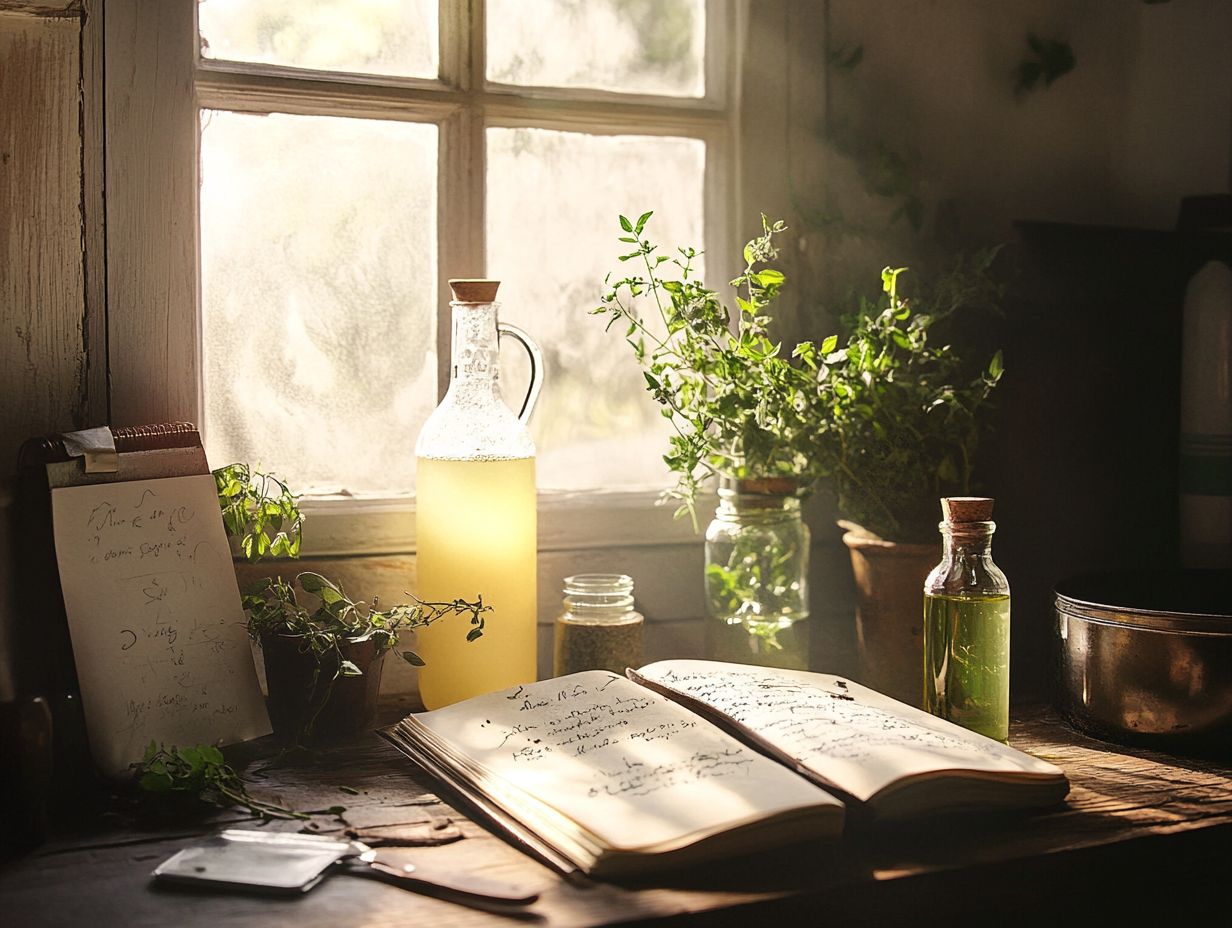
To maximize the effectiveness and safety of your homemade insecticidal soap, follow a few key tips that enhance your pest control efforts. Start by applying the soap early in the morning or late in the afternoon. This timing helps you avoid direct sunlight, which can reduce its effectiveness.
Make it a habit to check your plants regularly for any signs of pest activity. Reapply the solution as needed, especially after rainfall. By following these guidelines, you can effectively manage plant pests while fostering a vibrant and healthy garden environment.
Maximizing Effectiveness and Safety
Maximizing the effectiveness and safety of your homemade insecticidal soap involves careful watching and strategic application. This approach helps you combat plant pests and keeps the helpful bugs that are vital to your garden’s ecosystem safe.
Apply the solution in the early morning or late afternoon to enhance its pest-fighting capabilities. Being aware of the helpful bugs during application helps maintain balance in your garden. This ensures that predatory insects remain unharmed and continue their crucial role in natural pest control.
Understanding the life cycles of both pests and helpful bugs improves your timing and effectiveness. For instance, applying the soap when pests are most vulnerable typically during their egg or larval stages leads to a higher success rate.
Regularly checking your plants for signs of both issues and helpful activity is key. A few pests are part of a healthy garden; this perspective fosters a balanced approach to pest management, allowing natural predatory cycles to thrive while providing necessary care for your plants.
Alternative Recipes and Variations
Exploring alternative recipes and variations of homemade insecticidal soap opens a world of possibilities for effective pest control. This enables you to tailor your approach to meet specific needs and tackle various plant pests.
For example, adding ingredients like garlic and ground red pepper can significantly boost the formula s potency against unwanted intruders. Meanwhile, apple cider vinegar introduces additional repellent properties.
These variations equip you with versatile options for addressing common plant infestations. They also align seamlessly with organic gardening principles, emphasizing environmentally friendly solutions.
Exploring Different Formulations
Exploring different formulations of homemade insecticidal soap can unlock more effective pest control strategies tailored specifically to your garden s unique needs. Incorporate ingredients like garlic, which naturally repels insects, or ground red pepper, known for its potency against certain nuisances, to enhance your soap s effectiveness.
Consider the impact of these formulations on helpful bugs. Maintaining a healthy ecosystem is key to cultivating a thriving garden.
For instance, a simple mixture of dish soap and vegetable oil can suffocate soft-bodied insects like aphids and spider mites. A blend featuring neem oil offers a natural solution for a broader range of pests without harming allies like ladybugs.
You might also consider incorporating essential oils like peppermint. This not only repels unwanted visitors but also adds a delightful fragrance to your garden. Each unique formulation allows you to target specific pest challenges. It’s crucial to monitor the effects closely to keep the balance of life in your garden harmonious.
Frequently Asked Questions
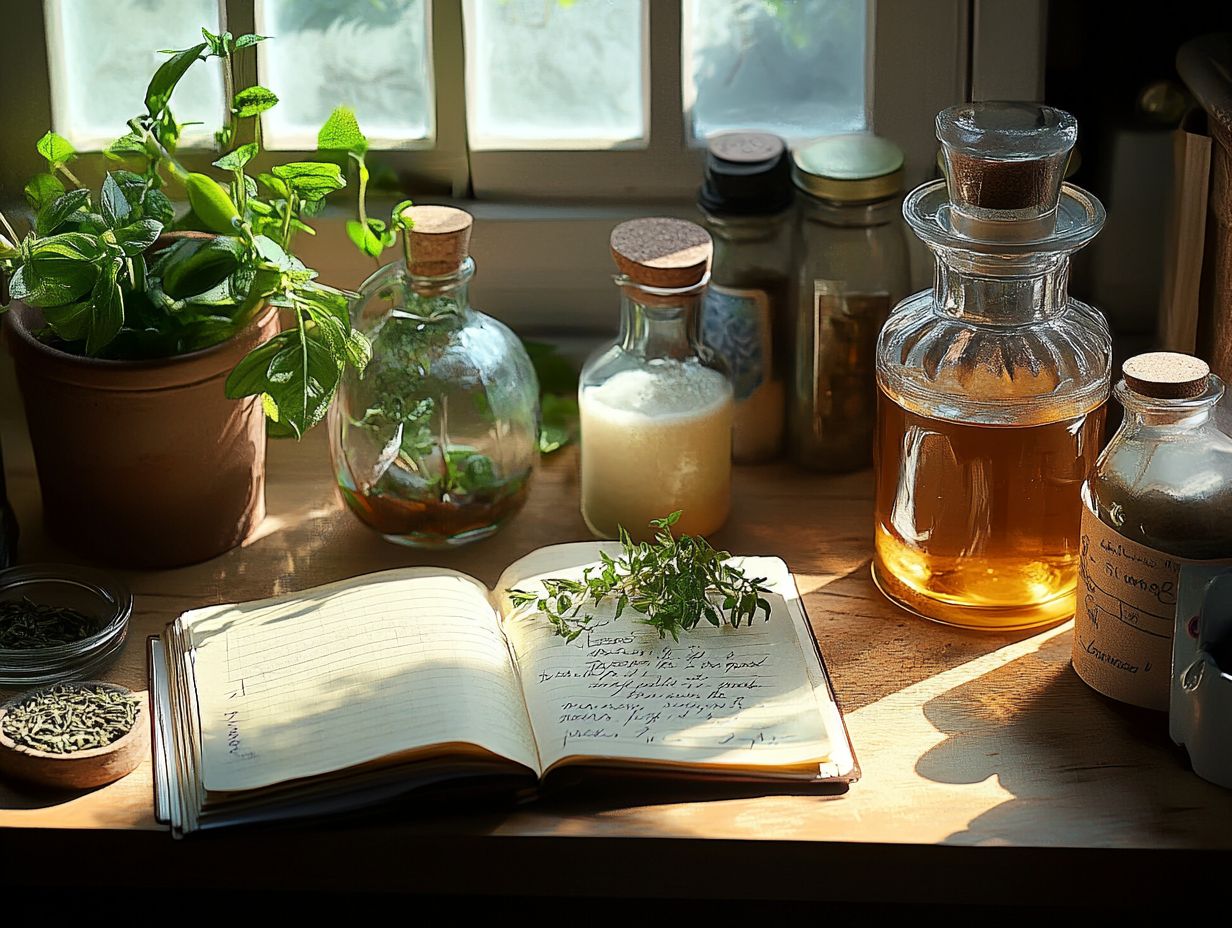
What is homemade insecticidal soap?
Homemade insecticidal soap is a natural and cost-effective mixture used to control and eliminate pests, such as insects and mites, in your garden or on indoor plants. It is made from a few simple ingredients and is safe for both plants and the environment.
How does homemade insecticidal soap work?
Insecticidal soap disrupts the cell membranes of insects. This process causes them to dehydrate and die. It’s effective against a wide range of pests, including aphids, mealybugs, spider mites, and whiteflies.
What are the benefits of using homemade insecticidal soap?
Homemade insecticidal soap is a cost-effective and natural alternative to store-bought pesticides. It is safe for beneficial insects like ladybugs and bees. Plus, it won’t harm your plants or the environment.
How do I make homemade insecticidal soap?
To make homemade insecticidal soap, you will need liquid castile soap, vegetable oil, and water. Mix 1 tablespoon of soap and 1 tablespoon of oil with 1 quart of water and shake well. Creating your insecticidal soap is simple and rewarding you’ll love seeing the results!
How do I apply homemade insecticidal soap?
To apply homemade insecticidal soap, spray the mixture onto the affected plants, covering both the tops and bottoms of leaves. Be sure to thoroughly coat the pests. Make sure to repeat the treatment every 5-7 days to quickly eliminate the pests.
Is homemade insecticidal soap safe for all plants?
Homemade insecticidal soap is safe for most plants, but it’s always a good idea to test it on a small area first to avoid harm. Some plants, such as ferns and succulents, may be more sensitive to the soap and should be sprayed less frequently.
Try making your insecticidal soap today! Share your success stories with us!

